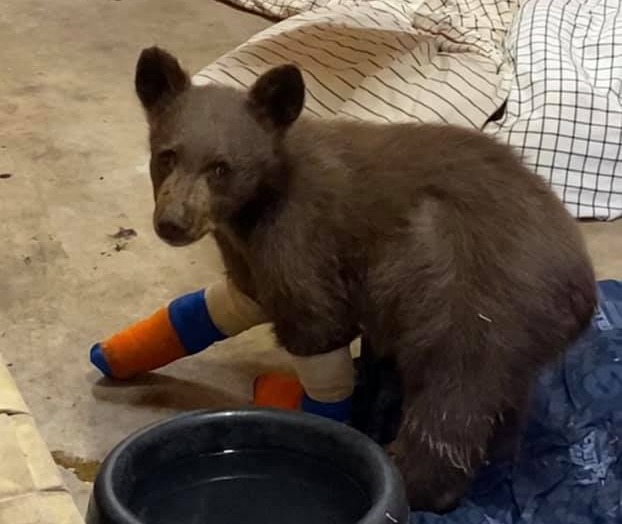The expansion will include work on the hospital, with two large recovery rooms, surgery and X-ray areas, individual care buildings for different species and a small dormitory for staff providing round-the-clock care — all at the place young Tamarack briefly called home.
The tale of Tamarack's rescue-turned-escape began July 26 when a homeowner in Markleeville, California, spotted the cub crawling on his knees because his paws were so badly burned.
Photos of the bandaged black bear at the rescue center flooded social media and drew mention in international news coverage of the devastating fire that forced thousands of evacuations.
“Tamarack was sort of the first feel-good story that came out of the fire. It was all destruction and heartbreak, and then there’s this little guy that had survived,” Erfani said this week. “Then, of course, that little stinker was not going to be caged. He just wanted out.”
On Aug. 3 the center announced his escape, warning anyone who spotted him to stay away and report sightings to wildlife officials. Another flurry of publicity followed, less flattering than before.
“We got lambasted on social media. People were being nasty,” Erfani recalled. “It was very emotional for us because we had connections with him. A lot of people were really upset.”
The center did everything it could to corral the cub, even sending up heat-seeking drones sometimes used to find lost hikers, Erfani said. “We spent a lot of time and money trying to find him. Our fear was that he wouldn’t be able to survive, so we didn’t give up,” he said.
The work paid off: Two days after Tamarack's escape, volunteers spotted and photographed a cub clinging to a tree 40 feet up in a nearby forest. They became convinced it was the 6-month-old escapee, decided to leave him alone, and now believe he’s doing just fine.
“We could tell he had all the same markings. But he appeared safe, and once released into the wild, we don’t bring them back,” Erfani said.
“He wasn't happy being contained, pacing a lot. So, when we got him to a point where he could climb, that’s all he really needed. Once he got that defense ... his instincts [kicked] in.”
Tamarack wasn’t like older bears who — because of issues including drought-driven food shortages — abandon the woods to rummage through garbage and sometimes break into Lake Tahoe homes.
“They become ‘urban’ bears," Erfani said. "Until the fire, [Tamarack] was from the backcountry, out in the wild. He never saw a house, never saw a car.”
“We like to believe he’s out there now in the wild, living the bear’s life.”
